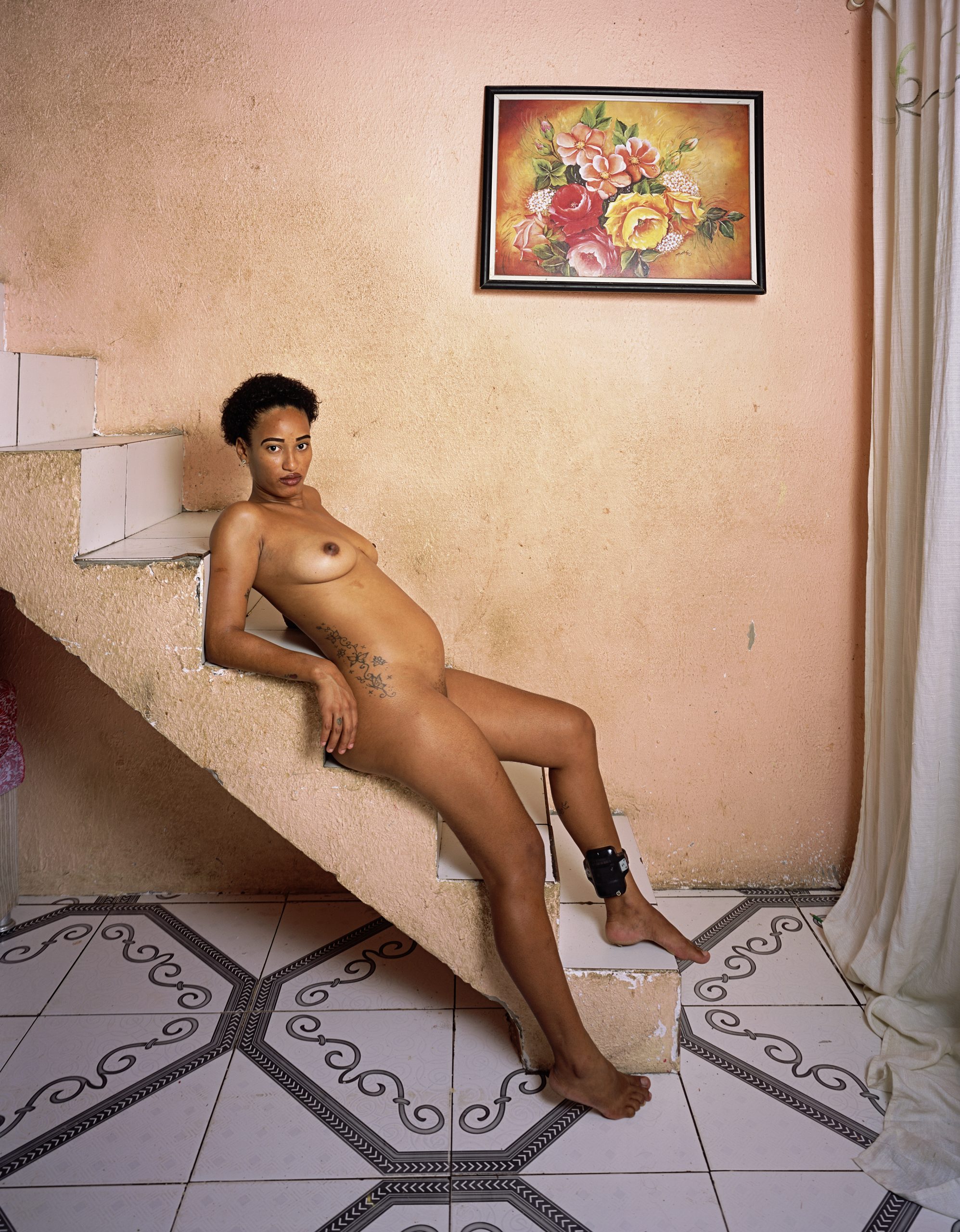
Deana Lawson, Daenare, 2019. Pigment print. 73 1/2 × 57 1/4 inches (186.7 × 145.4 cm). Fotene Demoulas and Tom Coté Art Acquisition Fund. Courtesy the artist and Sikkema Jenkins & Co., New York. © Deana Lawson
Deana Lawson’s highly staged photographic works depict Black sitters, who she meets locally or during her travels, in a variety of everyday interiors and domestic settings. Inspired by the family album, Lawson’s intimate and powerful images envision an extended family encompassing the full spectrum of Black diasporas. Her work questions and expounds upon the fraught tradition of portraiture and the history of photography, addressing ideas of representation, notions of beauty, and the multifaceted depictions of Black life.
As a photographer, Lawson meticulously crafts compositions to share a familiar and resonant portrait of Black life. Her large-format photographs are known for their technical richness, elevating the many details and intentional arrangements that compose the final image. The scale of her more recent pictures heightens the presence of her subjects, who often return the viewer’s gaze with an uncanny self-possession. Daenare, a portrait of a young Black woman in Salvador, Brazil, speaks to such a presence. In 2019, Lawson traveled to Bahia in northeast Brazil in preparation for the thirty-fourth São Paulo Art Biennial, where she made a series of images depicting the South Atlantic Black diaspora. The nude woman in this image poses languidly across a worn, pink and white staircase that offsets a tiled tiled floor. A framed, decorative still life print and the closed curtains suggest a private moment within a domestic space, while the woman’s posture recalls the canonical femme nude portrait. Closer viewing reveals further details: the woman’s nudity draws attention to her pregnancy, while the ankle monitor she wears on her left foot appears as her only visible adornment. Lawson shares that it was only after she made this photograph that she noticed the ankle monitor, gesturing to ideas of surveillance, visibility, movement, and vulnerability for not only the subject, but also for the population at large, and especially so when under a minoritarian regime. “In my photographs, regardless of where they’re taken, whether it’s Haiti, Alabama, Brooklyn, the Congo, Ethiopia, I want people to come across like an expanded family,” explains the artist. “Whoever I photograph I start from the premise that they are a magnificent human being and that my experience as a human being interacting with theirs makes all that that much more complex.”